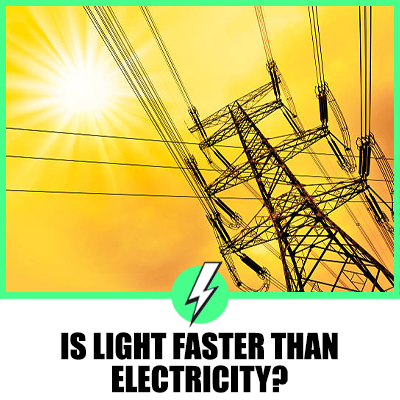Is Light Faster Than Electricity? A Comparative Analysis
In the realm of physics, two phenomena that have always intrigued scientists and laymen alike are light and electricity.
Both are integral to our daily lives, powering everything from our homes to our bodies.
But when it comes to a race, which one would win?
Is light faster than electricity?
Let’s delve into this fascinating topic.

Contents
The Speed of Light
Light, in its purest form in a vacuum, travels at an astounding speed of approximately 299,792 kilometers per second.
This speed is one of the fundamental constants of nature, a cornerstone upon which much of modern physics is built.
Whether you’re in London or Los Angeles, this cosmic speed limit remains the same.
Light’s speed is so fast that it can circle the Earth over seven times in just one second.
This incredible speed is why we see the effects of light almost instantly in our daily lives.
When we flip a switch, the room is illuminated in that very instant, giving us the impression that light’s speed is instantaneous.
Lightning
Lightning, a natural spectacle, is a form of electricity.
The visible light produced by a lightning bolt travels at the speed of light.
However, the movement of the electrical discharge, the actual electricity, is slower.
The speed of the electrical discharge in a lightning bolt is estimated to be around one-third the speed of light.
This speed is still incredibly fast, allowing lightning to strike from the sky to the ground in a fraction of a second.
But compared to the speed of light, it’s a distant second.
The Speed of Electricity
When we talk about the speed of electricity, things get a bit more complex.
In a typical wire, the actual electrons move quite slowly, at a rate of a few millimeters per second.
This speed, known as the drift velocity, is many orders of magnitude slower than the speed of light.
However, when we flip a switch to turn on a light, the light comes on almost instantly, even though the actual electrons are moving quite slowly.
This is because the electric field propagates along the wire at close to the speed of light, causing the electrons to start moving.
This is similar to a tube filled with balls where pushing one ball at one end causes a ball at the other end to move almost instantly.
Is Anything Faster Than Light?
According to our current understanding of physics, specifically Einstein’s Theory of Relativity, nothing can move faster than the speed of light in a vacuum.
This speed is a fundamental constant of nature and serves as a cosmic speed limit.
Any object with mass would require infinite energy to reach the speed of light, making it impossible.
Why is Electricity the Speed of Light?
The speed at which an electric field propagates is close to the speed of light.
This is due to the electromagnetic nature of light.
Light is an electromagnetic wave, and when an electric field changes (like when a switch is flipped), this change propagates at the speed of light.
However, this does not mean that the actual electrons are moving at the speed of light.
Their movement, as mentioned earlier, is much slower.
Insights from Online Discussions
Online discussions on this topic reveal a wide range of perspectives and interpretations.
Some emphasize the difference between the speed of individual electrons (which is slow) and the speed of the electric field or “signal” (which is close to the speed of light).
Others point out the common misconceptions and errors in textbooks that lead to confusion about this topic.
The consensus, however, is clear: while the effects of electricity can be observed almost instantly over short distances, the actual speed of electrons is much slower than the speed of light.
In conclusion, while electricity and light are both fundamental to our existence and modern life, when it comes to speed, light is the clear winner.
However, the speed at which the effects of electricity can be observed, particularly over short distances, can give the illusion of electricity moving at the speed of light.
This fascinating interplay between perception and reality is just one of the many reasons why the study of physics continues to captivate scientists and laymen alike.





